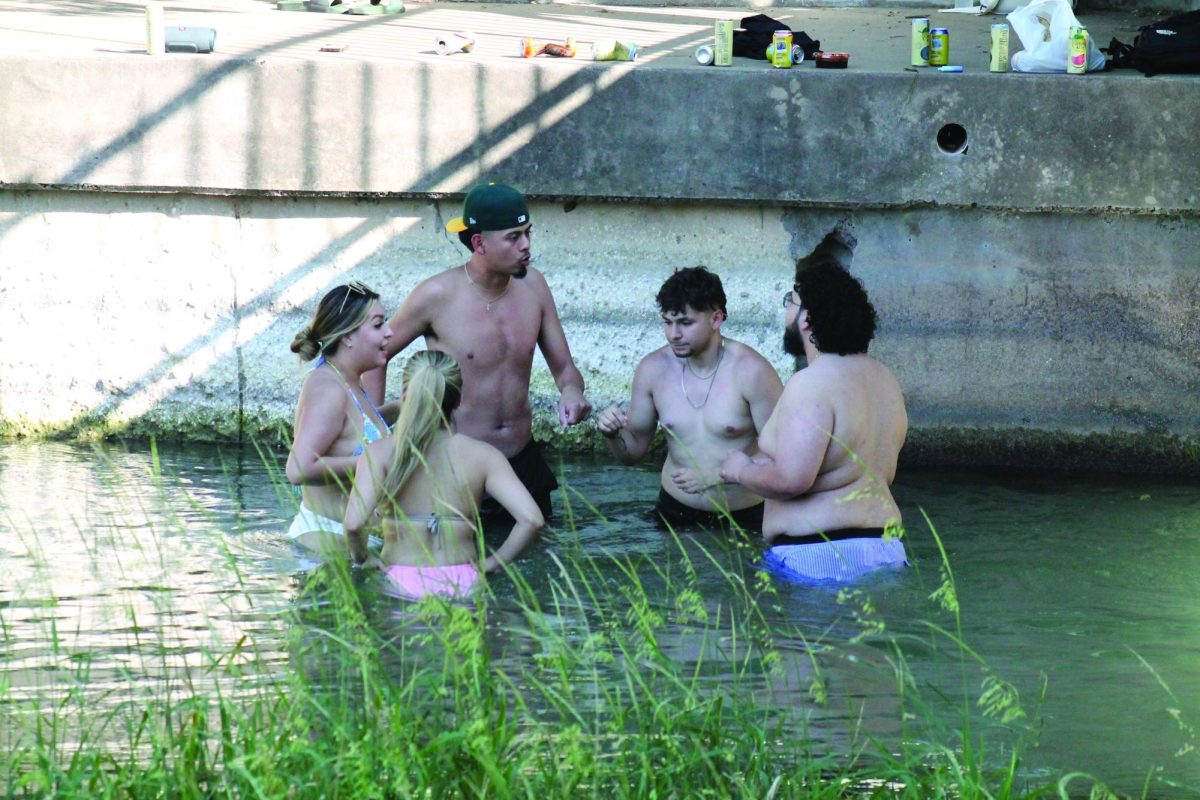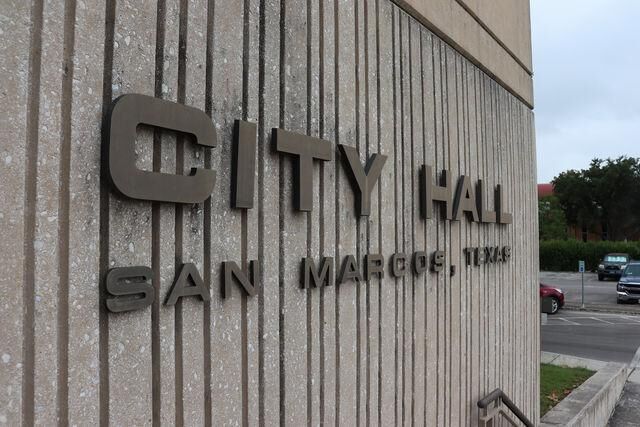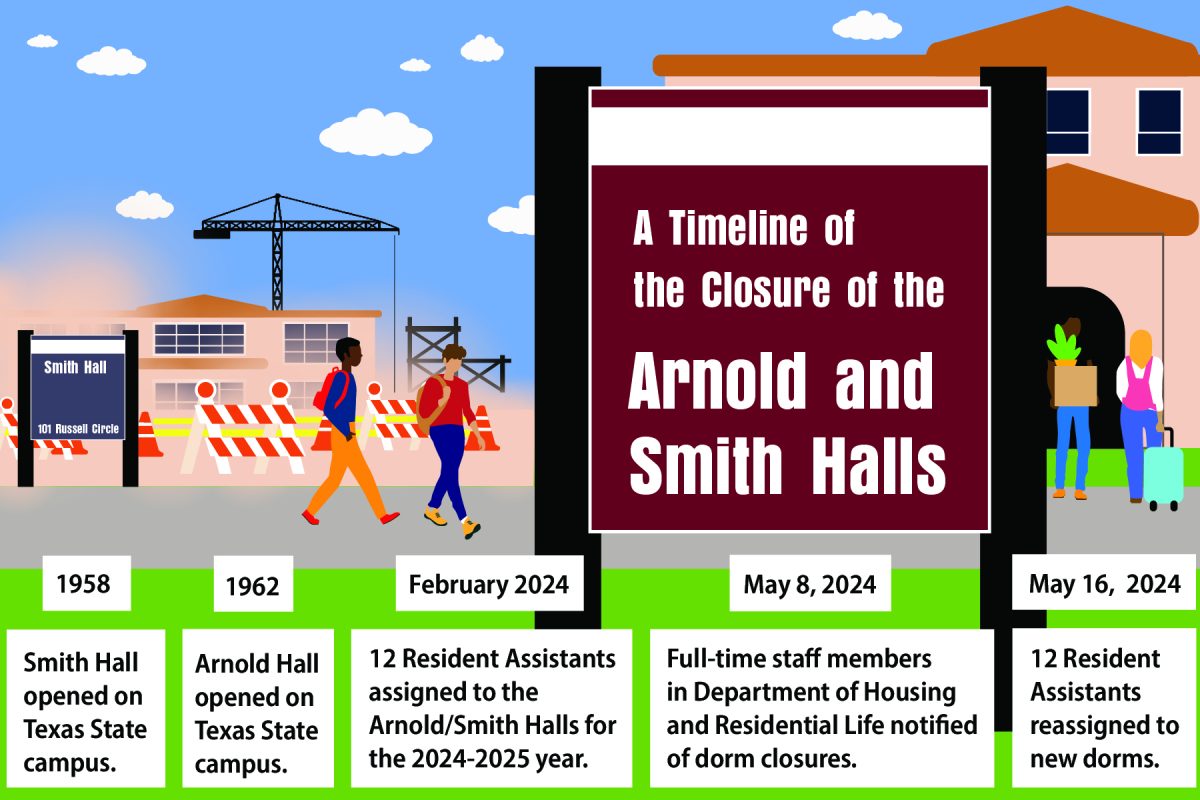Where there were once hundreds of tiny springs bubbling up to the top of Spring Lake, there are now only dozens. Instead of a vast array of limestone sand, guests of Spring Lake can now see it mostly covered with algae.
The San Marcos Springs, one of the largest major spring networks in the San Antonio segment of the Edwards Aquifer, has had an average flow of roughly 80 cubic feet per second this summer – the average flow for the springs is 152 cubic feet per second.
The Edwards Aquifer, an underground water source that supplies the San Marcos springs with water and over two million people in Texas for drinking and everyday use, is at its lowest level since 2014.
Only 1956, which had an all-time low flow of 46 cubic feet per second, and 1996, which had an average flow of 76 cubic feet per second, have seen lower flows than this year.
Robert Mace, director and chief water policy officer at the Meadows Center, said he hasn’t seen flows this low in a while.
“There’s a lot of concern by the folks at the Meadows Center about the springs,” Mace said. “We’ve seen the lake level go down… this is the worst many of us have ever seen [Spring Lake].”
In 1956, San Marcos was in its worst drought in history, which led to its lowest springflows ever. According to Mace, however, there was no management of the river system to protect the springs from the drought.
“It’s not just for the aesthetics, not just for the jumping in the river and floating… but for the vitality of our community,” Texas State President Kelly Damphousse said.
San Marcos has been in a drought since March 2022 and placed Stage 2 restrictions in April 2022. On July 2, San Marcos entered Stage 3 drought restrictions for the first time since 2015 and it was announced that the city will enter Stage 4 restrictions at noon on Aug. 27. Many of the surrounding counties that also rely on the Edwards Aquifer are also in Stage 4 restrictions.
Extreme drought areas in Central Texas are expanding daily, and could reach Hays County.
According to Mace, the Edwards Aquifer isn’t projected to see much recharge and run off in the future and dry spells between rainfalls will continue to get longer.
“We were just in a really bad drought 10 years ago and here we are in another really bad drought 10 years later,” Mace said. “That pattern, it seems to be showing itself over the last 20 years in Central Texas and it’s just projected to get worse.”
A one night stand of rainfall will not do much to affect spring levels. In order to see a noticeable improvement, Mace said that consistent above average rainfalls need to happen.
The springs, however, are in a better spot than it was in 1956, largely in part to efforts from the Edwards Aquifer Authority and the implementation of the Edwards Aquifer Habitat Conservation Plan (EAHCP) in 2013.
“It’s not the worst drought we’ve ever seen, fortunately,” Mace said. “We’re in a better place than the 50s… but this is a doozy.”
Endangered wildlife that the San Marcos River and springs harbors, like Texas Wild Rice, San Marcos Salamanders and Texas Blind Salamanders, thrive on normal levels of water and springflow. However, according to Mace, conservation efforts to protect endangered wildlife in the San Marcos Springs and river have been suspended due to low springflow.
“During the [EAHCP], basically we’re kind of gardening in the river and in the spring system, and because of the low flows, we have to step back from that,” Mace said. “The concern is that we’re down there messing with [the river bottom], we’re more likely to affect habitats for species that may be under some stress with the lower flows.”
The biggest human factor on the endangered wild rice is river goers pulling it out. River recreation was banned in 2020-21 due to COVID-19. In 2021, wild rice coverage grew 177% from 2013, a record for wild rice coverage, because the plant’s ecosystem was unbothered by human influence.
According to the EAHCP, funding decreased for wild rice conservation efforts after most of the long-term biological goals were met by increasing coverage of the plant two years ago.
In 2021, the estimated budget to enhance coverage of wild rice was $20,000.
Due to the cutback of conservation efforts, which aren’t being made because it could harm the endangered species more, the 2023 estimated budget to enhance the endangered plant was $10,000, a decrease of 50%.
Mace said that river floaters should first recognize the San Marcos River as a habitat for these endangered species.
“You should treat it like a visit to grandma’s house,” Mace said. “You can’t go over to grandma’s house and pee on the floor.”





























